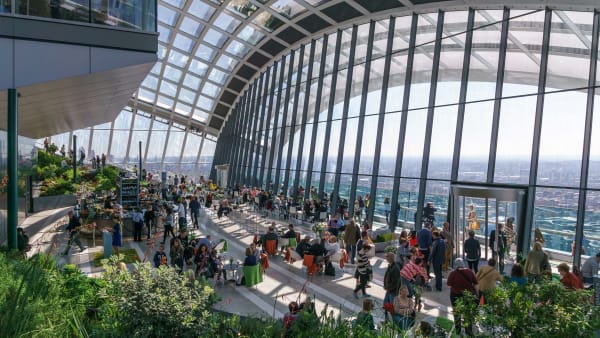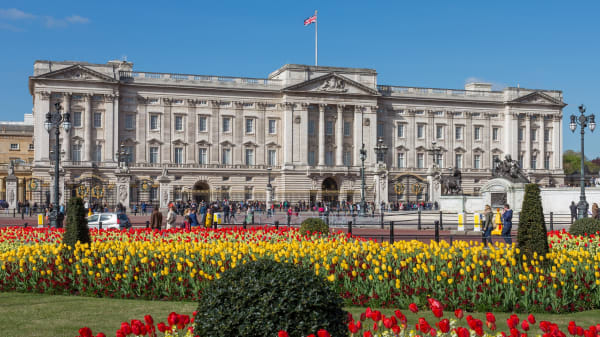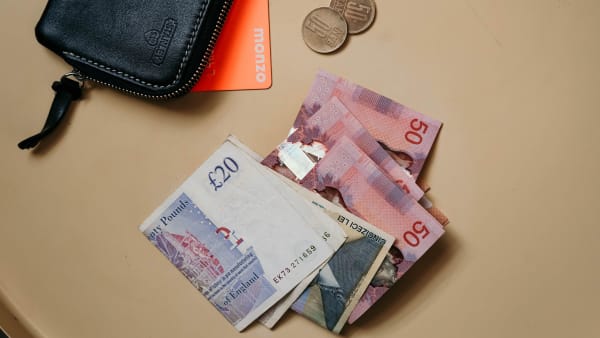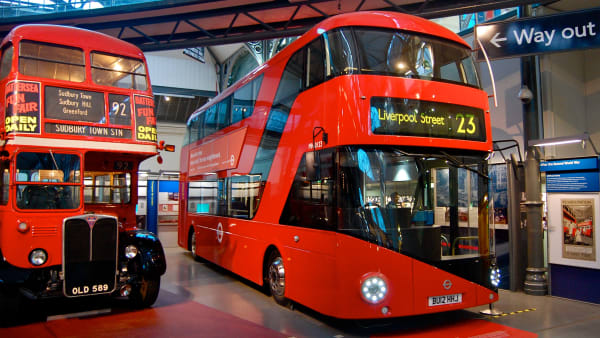Natural History Museum
Gigantic skeletons, spectacular life-size models, and some of the most intact fossils ever found. This is London’s Natural History Museum, with its dozens of galleries dedicated to the natural world and its evolution
Natural History Museum
Gigantic skeletons, spectacular life-size models, and some of the most intact fossils ever found. This is London’s Natural History Museum, with its dozens of galleries dedicated to the natural world and its evolution
The Natural History Museum is one of the key museums in London. It is an institution dedicated to the natural world (animals, plants, fungi, ecosystems, geology, palaeontology, and climatology), its history, evolution, identification, and conservation.
Up until 1963, the Natural History Museum was part of the British Museum, and it was known as British Museum (Natural History). Since then, the Museum has expanded exponentially, becoming one of the most important museums in the UK. Today, its holdings are made up of around 80 million items from five different collections: botany, entomology, mineralogy, palaeontology and zoology.
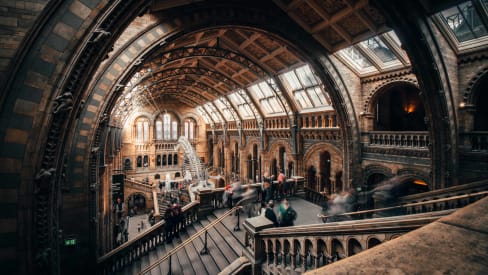
Aside from the collections, another much-appreciated feature of the Natural History Museum is its ornate Victorian architecture. The style is a mix of Gothic Revival and twelfth-century Romanesque architecture, with terracotta decorations throughout the entire building.
Among the Museum’s holdings, the most famous are the dinosaur skeletons and the life-size models, which include hominins, as well as large aquatic and terrestrial mammals. Following is a list of some of the highlights and prominent displays.
- Hope, a 25-metre (82 feet) long blue whale skeleton.
- Dippy, a 26-metre (85 feet) long plaster cast of a Diplodocus carnegii skeleton.
- An Apollo 16 Moon rock sample.
- Sophie, the most intact Stegosaurus fossil skeleton ever discovered.
- A full-sized animatronic model of a Tyrannosaurus rex.
- A cross-section of a 1,300-year-old sequoia.
What’s inside the Natural History Museum
The Natural History Museum contains a multitude of collections of great scientific as well as historical value, considering that some of the specimens were collected by illustrious academics of the likes of Charles Darwin.
The Museum is divided into four colour-coded zones, each containing several galleries. They are as follows.
- The Planet’s Evolution - Green zone
In this area’s galleries you’ll see lots of skeletons (including the massive blue whale Hope), birds, insects, arthropods, plants, minerals, meteorites, as well as marine reptile fossils and British fossils. This is also the area where you can find the lounge, the study area, and the restaurants.
- History of the Earth - Red Zone
Here you will find plenty of galleries dedicated to the evolution of life on our planet. Expect to see dinosaur and hominin fossil skeletons together with other fossil evidence, an earthquake simulator, life-size hominin models, minerals, gemstones, as well as galleries dedicated to geology and meteorology.
- The Diversity of Planet Earth - Blue zone
In this zone you can see dinosaur and mammal models, fossils, nature illustrations, marine invertebrates and taxidermy of various specimens of mammals, amphibians, reptiles, and fishes.
- Behind the Scenes - Orange Zone
In this area you’ll be able to meet the experts at the Attenborough Studio and see over 23 million specimens stored in spirit.
The Natural History Museum also has a Library containing books, journals, manuscripts, and artwork linked to the research of the scientific departments.
Location
Cromwell Road, South Kensington, London.
The Natural History Museum is located in the South Kensington area, an upscale neighbourhood home to several notable cultural institutions.
Aside from the Natural History Museum itself, here you will find the Science Museum, located just behind it, the Victoria and Albert Museum, across the road, and the Royal Albert Hall, down the street and just opposite Kensington Gardens and Hyde Park. In fact, all these venues and parks can be found within a 600-metre (0.3 miles) radius from one another.
Tickets and price
Entry to the Natural History Museum in London is completely free. Still, you can reserve your entry to make sure that you’ll be able to enter on the day of your visit.
Members have priority access, as well as reserved entries without the need to book. You can become a Member by going to the Natural History Museum’s dedicated page .
Access to the Natural History Museum’s Library is by appointment only.
Schedule
The Natural History Museum is open every day from 10:00 am to 5:50 pm. The museum is closed only from the 24th to the 26th of December.
| Day |
|---|
| Mon-Sun |
| Day | Opening time | Last admission | Closure |
|---|---|---|---|
| Mon-Sun | 10:00 am | 5:30 pm | 5:50 pm |
Transport
If you want to take the Underground, you can take the Tube lines District, Circle, or Piccadilly and get off at South Kensington. There is a tunnel directly from South Kensington station that emerges close to the entrance, directly in front of the Natural History Museum.
You’ll find that there also are plenty of buses that stop all around the Natural History Museum. Bus routes 14, 49, 70, 74, 345, 360, 414, 430 and C1 are all good options.
You can find a summary of the public transport options in the table below.
| Method |
|---|
| Lines |
| Stops |
| Method | Underground | Bus |
|---|---|---|
| Lines | District, Circle, Piccadilly | 14, 49, 70, 74, 345, 360, 414, 430, C1 |
| Stops | South Kensington | - |
It’s possible to reach the Natural History Museum by cab, but we don’t recommend it, since traffic in central London usually means waiting for a long time and paying an expensive fare.
Nearby sights
Science Museum - just behind the Natural History Museum.
Victoria and Albert Museum - across the street from the Natural History Museum.
Imperial College London - 220 m (0.1 miles) down the street, 3-minute walk.
Royal Albert Hall - 600 m (0.4 miles) north, 8-minute walk.
Hyde Park - 600 m (0.4 miles) north, 8-minute walk.
Kensington Gardens - 900 m (0.6 miles) northwest, 11-minute walk.
Harrods - 1 km (0.7 miles) east, 13-minute walk.









